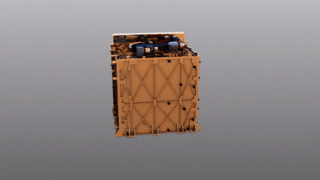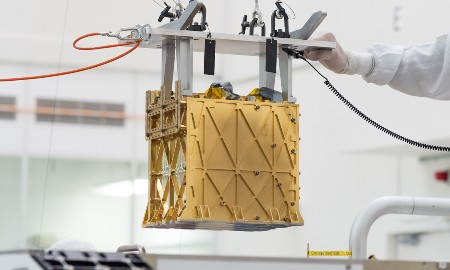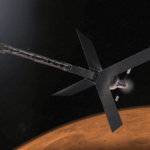As we continue to trash this world, NASA researchers are making it possible for us to live on another. The latest success of the Perseverance rover is the demonstration technology known as MOXIE. The acronym stands for Mars Oxygen In-Situ Resource Utilization Experiment.
What is MOXIE?
It is a laboratory in a box weighing 17.1 kilograms (37 pounds) here on Earth, far less on Mars. It is about the size of a car battery and was delivered to the Martian surface tucked inside the Perseverance rover. Its singular purpose is to extract oxygen (O2) from the Martian atmosphere which is composed of 96% carbon dioxide (CO2). Oxygen on Mars is a trace gas making up a mere 0.13% which means we humans couldn’t catch a breath if we tried when on the planet without a portable air supply.
Why has NASA created MOXIE?
Generating O2 from as tenuous an atmosphere as Mars has (a mere 1% of Earth’s volume), and composed largely of CO2, is considered critical to any future human mission to the planet. We cannot carry a payload with sufficient breathable air and O2 for making liquid oxygen (LOX) for propellant for the return to Earth. We, therefore, need to extract it in situ, in other words using local resources at hand. In situ resource utilization (ISRU) is seen by NASA as a key to future Mars missions, and certainly for any temporary or permanent settlement on the planet.
How does MOXIE work?
The CO2 acquisition system sucks Martian air into it and pressurizes it to approximate Earth’s atmosphere. The air is then fed to a Solid Oxide Electrolyzer given the acronym SOXE which heats it to 800 Celsius (1,472 Fahrenheit) degrees where the air is split into separate molecular components via an electrochemical process. This releases O2 in what NASA describes as running a reverse fuel cell. Once the O2 is extracted the exhaust is cooled, then filtered to ensure no rover-borne contaminants from Earth that may have hitched a ride on Perseverance can be introduced into the Martian atmosphere. MOXIE monitors production rate and purity throughout the process. The end result is the harvesting of 10 grams of O2 per hour equal to one hour of breathable air.
With MOXIE success, what’s needed in the future?
MOXIE’s first experiment reported in this week and the results show that it is working. It produced 5 grams of O2 or about 10 minutes of breathable air. Obviously, a much larger version will be needed for future human missions not just to produce air for breathing but LOX for propellant.
In a NASA press release this week, Jim Reuter, Associate Administrator of the Space Technology Mission Directorate is quoted stating, “This is a critical first step at converting carbon dioxide to oxygen on Mars. MOXIE has more work to do, but the results from this technology demonstration are full of promise as we move toward our goal of one day seeing humans on Mars.”
NASA hopes to be able to manufacture more than 75% of in-situ propellant components including LOX and liquid hydrogen which would be harvested from the large amounts of ice that we now know lies just under vast areas of the Martian surface. The numbers required amount to 7 metric tons of hydrogen and 25 metric tons of O2 produced in situ. A MOXIE the size of a metric ton should be able to produce the kind of volumes NASA projects as needed.
What is still left for MOXIE to demonstrate?
NASA wants to run MOXIE in different conditions, that is, during different times of the Martian day, and during the changing seasons that unfold on the planet of the next Martian year (almost 2 Earth years). It will be interesting to see how diurnal temperature variations, which are far more extreme on Mars, affect O2 production. NASA plans, therefore, to have MOXIE run nine experiments over the course of Perseverance’s first year on the planet.

















